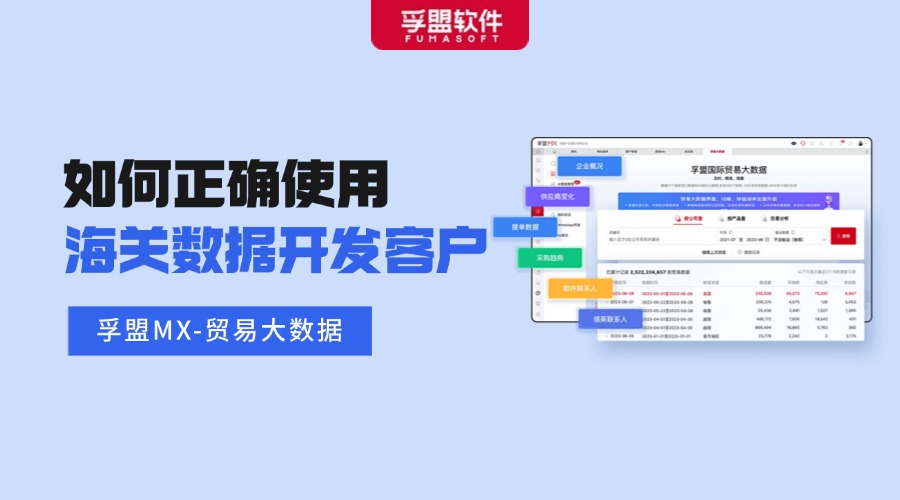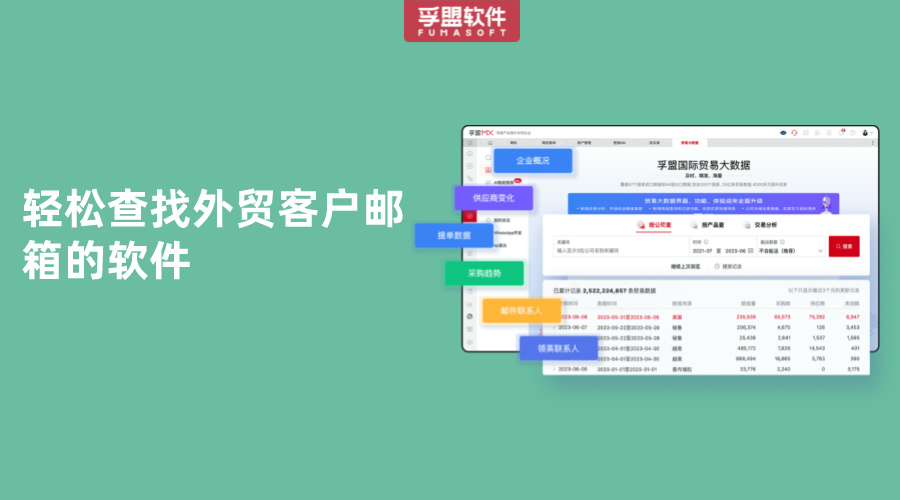 首頁
>
新聞資訊
>
外貿干貨
>
RCEP下周生效,將加速域內“微型跨國企業”崛起
首頁
>
新聞資訊
>
外貿干貨
>
RCEP下周生效,將加速域內“微型跨國企業”崛起
RCEP下周生效,將加速域內“微型跨國企業”崛起

2020年全球新冠肺炎疫情暴發以來,誰在滿足全球買家層出不窮的新需求?
“一個速溶于水的環保狗狗糞便袋,我們賣爆了英國、德國、法國、意大利、西班牙和美國”; “我們在Tiktok上的‘粉絲’過億,產品除了銷往歐美日外,也進入了東南亞市場”;“10年前我學的外貿專業很熱門,畢業后進外貿公司又要搶破頭,但現在,跨境電商比外貿公司火多了,當年沒進外貿公司的我,現在反而成了學弟學妹們口中的成功師兄”……
說這些話的,并不是傳統跨國企業的首席執行官,而是來自珠三角、長三角甚至內陸省市的80后、90后外貿人,他們白手起家打造的,或許是全世界最微小的跨國企業。
“未來3年仍是數字貿易的發展黃金期。在亞洲范圍,大量微型跨國企業正快速崛起,他們不僅把生意做到萬里之外的多個海外市場,也將成長為未來全球貿易的主力。”德勤中國區副主席林國恩如是說。
12月14日,德勤發布2021年度《科技賦能亞太數字貿易》報告,將目光聚焦在疫情中逆勢上揚的全球數字貿易,詳細分析了亞太數字貿易生態變化,首次勾勒出這場變革中的主角——成長中的亞洲中小跨境電商。在《區域全面經濟伙伴關系協定》(RCEP)政策紅利和數字技術助力下,他們正嘗試關鍵一躍,成長為“微型跨國企業”。
RCEP破壁壘、降成本
亞太數字貿易進入強增長周期
2020年-2021年,疫情加速了消費者和商家的數字化進程,全球買家都開始習慣在線“買買買”,全球數字貿易實現快速增長。
聯合國數據顯示,2021年第三季度,全球商品貿易量超過5.6萬億美元,創下歷史新高。其中,跨境電商更是借勢起飛。據中國海關總署統計,今年前三季度,中國跨境電商進出口增長了20%,2020年其規模就達到1.7萬億元,其中出口占2/3,增長40%。
而這樣的增長才剛剛開始。德勤報告指出,在技術進步、國際合作開放等諸多因素影響下,全球貿易正進入智能化升級新階段。包括5G在內的重要數字基礎設施落地,海量大數據疊加人工智能,讓智能決策成為可能,幫助開啟萬物互聯時代。技術升級會吸引越來越多的跨境電商加入數字貿易的全球產業鏈,以滿足全球消費者日益增長的數字消費習慣,其中,亞太將成為全球數字平臺建設的生力軍。
與此同時,全球不同區域的政策構建也正在影響該區域的發展態勢。一方面,2022年1月1日,RCEP這個惠及人口最多、全球規模最大的自貿協定即將生效,將從消除關稅壁壘、建立靈活的原產地規則、促進電子商務、提升貿易便利化水平、重視中小企業和技術合作等五大方面促進區域數字貿易。另一方面,從2021年7月1日起,歐盟增值稅改革正式實施,主要改革重點包括取消22歐元的增值稅免征、統一遠距離銷售應稅注冊門檻、擴大“一站式”合規機制適用范圍、明確電商平臺增值稅納稅義務。
對此,德勤報告預測,此消彼長之下,未來亞太區域內的數字貿易活動將呈對比性增強之勢。技術紅利疊加政策紅利,未來3年亞洲的“微型跨國企業”將迎來關鍵一躍。
“RCEP的實施能夠實實在在解決跨境電商行業目前面臨的問題。”廣州延訊貿易總經理李大衛表示。該公司員工不到100人,專注做家居和照明產品,主要銷往美國、歐洲、日本等國家和地區。
談及RCEP將帶來的紅利,李大衛舉例說:“這兩年日本的關稅成本過高導致很多中國跨境電商賣家放棄了日本市場。如果RCEP落地能逐步實現成員國之間享有零關稅,這對于跨境電商企業來說無疑是個好消息。”
根據德勤對亞太9個國家的調研,亞太跨境電商企業對RCEP的生效充滿期待,特別是在簡化清關手續、提高效率方面,其次是期望降低關稅壁壘、降低企業本地進入門檻。
不滿足于依賴大平臺
七成“微型跨國企業”想自建獨立站
“微型跨國企業”是個什么概念?如廣州延訊貿易總經理李大衛的公司一樣,員工不過百、貿易遍全球是一大特征。德勤對亞太多國600多家跨境電商企業的調研顯示,85%的跨境電商都是規模不到100人的小微型企業;少到只有一兩個人,卻能把生意做到平均超過3個以上的海外市場。3C、家居、美妝、服飾等是“微型跨國企業”出口全球的熱銷尖貨,歐美市場是出口的主要市場,東南亞則被公認為發展最快的新興市場。
同時,這些“微型跨國企業”的創始人多為80后、90后,生來就是“互聯網原住民”,不像老一輩外貿人受限于國際采購巨頭訂單,他們更擅長從全球社交網絡直面和挖掘消費需求,借助“本地制造”和亞太柔性的供應鏈為海外年輕消費者提供直接面對消費者的營銷模式(DTC)。
85后的李大衛談起自己的職業歷程時說,10年前進入跨境電商領域,那時跨境電商還是藍海市場,10年間,公司的業務從eBay擴展到亞馬遜、速賣通,而他現在最想嘗試的是做獨立站。
從抖音直播做到Tiktok短視頻帶貨的95后阿祝,也對獨立站“情有獨鐘”。“我們更愿意自建獨立站,因為在亞馬遜上每開一單就要繳納15%的手續費,做獨立站能把手續費控制在7%。而且做獨立站相當于給自己帶貨、帶流量,掌握的話語權更多,只需擁有充足的貨源。”
目前,阿祝的團隊不到20人,其中3個創始人負責研發爆款,十幾個員工負責做視頻創作和獨立站運營。他們開了上百個視頻號,服務全球1億多“粉絲”,再把“粉絲”引流到自建的多區域外貿獨立站,主打服裝、寵物、家居等垂直類目。目前,其主營的質優價廉的“國貨”已銷售到歐洲、美國、日本等國家和地區。
德勤報告顯示,當前,亞洲“微型跨國企業”64%的生意做在亞馬遜,31%做在eBay,做自建站和Lazada的各有18%,14%做速賣通,13%做其他海外本地電商平臺。但2021年以來的一個顯著變化是:三成企業已建好專屬的獨立外貿網站,另外七成企業也希望能自建獨立站。相比以往主要依賴亞馬遜等平臺,自建獨立站的興起是“微型跨國企業”自主品牌意識覺醒的標志。這不僅能免去第三方電商平臺的“進場費”,避免受制于大平臺的規則制約,也能更直接地面對消費者,增強“粉絲”的品牌忠誠度,使后續促活、拉新更有主動權,同時提升數字貿易數據的安全性。
RCEP域內跨境金融服務韌性強
“微型跨國企業”出海更安全可靠
盡管遭受全球新冠肺炎疫情沖擊,但作為全球最大的自貿區——RCEP區域的跨境金融服務仍顯示出強大的韌性。
12月14日,浙江大學和螞蟻研究院聯合推出的“RCEP區域數字貿易跨境支付服務指數”側面印證了亞太跨境電商的資金結算通道能力在近年來的顯著提升,其中“微型跨國企業”的活躍度、活力值最高。
該指數從RCEP15國區域內中小跨境電商企業視角出發,綜合了參與跨境收款賣家數、交易金額、支付筆數、收款平均時長和支付幣種等一系列指標,從跨境金融服務規模和服務質量兩大維度來衡量行業的整體服務水平變化。
指數顯示,2018年至今,RCEP區域數字貿易跨境支付服務指數4年內上漲了近2倍,年化增長率達18.55%。2020年跨境支付服務規模指數的年環比增速為53.5%,2021年的年環比增速為14.7%,兩年均保持了兩位數增長。其中,以支付筆數為標準衡量的支付活躍度遠遠領先于賣家的增長數以及交易金額的增長,在2021年第三季度同比增長25.6%,創下歷史新高。
對此,浙江大學國際聯合商學院院長賁圣林分析稱,這說明中小賣家在增加,訂單逐漸呈現碎片化、小單化特征,印證了亞洲“微型跨國企業”的崛起勢頭。
值得注意的是,德勤發布的2021年度《科技賦能亞太數字貿易》報告顯示,目前“等船來”是行業的普遍焦慮,尤其是“集裝箱熱”已影響到“微型跨國企業”的送貨效率,物流成本過高、清關查驗困難成為當前跨境電商企業面臨的最大挑戰。但與此同時,在“微型跨國企業”的經營百寶箱里,由于數字技術助力跨境支付可實現零門檻、低成本、高效率,企業對跨境收款的工具較為滿意。
團隊僅有12個人,生產自有品牌的環保型寵物糞便袋和環保洗碗布,通過跨境電商火爆歐美市場的深圳戈銳科技聯合創始人丁超是跨境收款工具的簇擁者之一。他表示:“過去做外貿回款整體周期至少要1~2個月,而如萬里匯(WorldFirst)等電子支付平臺提供的跨境收款服務可以做到一分鐘到賬,費率也是市場最低。如市面費率為0.8%,跨境收款工具可以做到0.3%。同時,萬里匯還能直接支付寶到賬,方便企業再去內貿批發平臺進貨,這樣一來能縮短30%的時間成本。此外,其還能幫助企業完成歐洲多國市場的VAT消費稅申繳。”
作為一名“微型跨國企業”的當家人,廣州延訊貿易總經理李大衛則把跨境的數字金融服務比作外包的“數字首席財務官(CFO)”。“有了懂技術的‘數字CFO’,企業‘出海’更安全、更可靠,基本不用擔心資金的安全性問題了。”
“數字科技時代,支付技術讓小微企業也有機會成長為微型跨國企業,讓他們以極低的門檻坐上全球數字貿易的列車,甚至和那些跨國大企業們坐到同一等車廂。”賁圣林表示。
萬里匯中國負責人范簡表示,“微型跨國企業”在出海的過程中需要更多政策和技術方面的支持來幫助他們更快捷、更安全地進行跨境“收付兌”,只有這樣才能迅速抓住全球數字貿易商機。
“我們近期提供了網商貸、美金貸等多種服務,希望能幫助跨境電商企業在年末的節日‘消費戰役’中用技術的力量幫他們‘搶籌’,緩解企業備貨、發貨等需求集中爆發的資金壓力。伴隨明年RCEP的生效,中國的‘微型跨國企業’還將迎來更大的風口。”范簡說。
孚盟軟件官方聯系方式
全國免費熱線:400-888-9800
客服在線微信

官網:http://www.gyjiangfeng.com/
地址:上海市閔行區新鎮路1399號T6棟4樓
Since the global COVID-19 outbreak in 2020, who is meeting the endless new needs of global buyers?
"An environmentally friendly bag of water-soluble dog poop that we sold in the UK, Germany, France, Italy, Spain and the US"; "We have over 100 million 'fans' on Tiktok, and our products are not only sold in Europe, America and Japan, but also in Southeast Asia." "10 years ago, the foreign trade major I studied was very popular. After graduation, I had to fight for the head of a foreign trade company. But now, cross-border e-commerce is more popular than foreign trade companies.
These are not the chief executives of traditional multinationals but the post-1980s and post-1990s traders from the Pearl River Delta, Yangtze River Delta and even inland provinces who have built from scratch perhaps the world's tiniest multinationals.
"The next three years are still the golden age for digital trade. On the Asian scale, a number of micro-multinationals are rapidly emerging, not only to do business in multiple overseas markets thousands of miles away, but also to become the future mainstay of global trade." So said David Lin, vice chairman of Deloitte China.
On December 14, Deloitte released the 2021 Report "Technology Enabling Digital Trade in Asia Pacific", which focuses on the global digital trade rising against the trend of COVID-19, analyzes the ecological changes of digital trade in Asia Pacific in detail, and Outlines for the first time the leading role in this change -- the growing small and medium-sized cross-border e-commerce enterprises in Asia. With the policy dividends of the Regional Comprehensive Economic Partnership (RCEP) and digital technology, they are attempting the crucial leap to become "micro-multinationals".
RCEP has broken down barriers and reduced costs
Asia-pacific digital trade has entered a strong growth cycle
In 2020-2021, the epidemic accelerated the digitization process of consumers and businesses, and global buyers became accustomed to online "buy, buy, buy", resulting in rapid growth of global digital trade.
Global trade in goods reached a record high of more than $5.6 trillion in the third quarter of 2021, according to the United Nations. Among them, cross-border e-commerce is taking off. According to China's General Administration of Customs, the import and export volume of China's cross-border e-commerce grew by 20% in the first three quarters of this year and reached 1.7 trillion yuan in 2020, with exports accounting for two-thirds, up by 40%.
And that growth has only just begun. The deloitte report pointed out that under the influence of technological progress, international cooperation and opening-up, global trade is entering a new stage of intelligent upgrading. Important digital infrastructure, including 5G, will be put in place, and artificial intelligence will be superlaid with massive big data, enabling intelligent decision-making and ushering in the era of the Internet of everything. Technological upgrading will attract more and more cross-border e-commerce enterprises to join the global industrial chain of digital trade to meet the growing digital consumption habits of global consumers, among which the Asia-Pacific region will become a new force in the construction of global digital platforms.
At the same time, the policy construction in different regions of the world is also affecting the development trend of the region. On the one hand, on January 1, 2022, the RCEP, the largest free trade agreement benefiting the largest population in the world, will enter into force. It will promote regional digital trade in five areas: removing tariff barriers, establishing flexible rules of origin, promoting e-commerce, enhancing trade facilitation, and focusing on small and medium-sized enterprises and technical cooperation. On the other hand, from July 1, 2021, the VAT reform of the European Union will be officially implemented. The key reforms include the abolition of the 22 euro VAT exemption, the unification of the taxable registration threshold for long-distance sales, the expansion of the scope of application of the "one-stop" compliance mechanism, and the clarity of VAT payment obligations of e-commerce platforms.
In this regard, the Deloitte report predicts that digital trade activities in the Asia-pacific region will show a comparative strength in the future. Technology dividend superimposed policy dividend, in the next three years, Asia's "micro multinational enterprises" will usher in a critical leap.
"The implementation of RCEP can truly solve the problems facing the cross-border e-commerce industry." Guangzhou yan Xun trade general manager David Li said. With less than 100 employees, the company focuses on home furnishing and lighting products, which are mainly sold to the United States, Europe, Japan and other countries and regions.
Referring to the dividends RCEP will bring, David Li said for example, "The high cost of tariffs in Japan in the past two years has led many Chinese cross-border e-commerce sellers to abandon the Japanese market. If the IMPLEMENTATION of RCEP can gradually achieve zero tariffs among member countries, it will undoubtedly be good news for cross-border e-commerce enterprises."
According to deloitte's survey of nine Asia-Pacific countries, cross-border e-commerce enterprises in the region have high expectations for the RCEP coming into force, especially in terms of simplifying customs clearance procedures and improving efficiency, followed by lowering tariff barriers and lowering local entry barriers for enterprises.
Not content with relying on big platforms
Seventy percent of micromultinationals want to set up their own sites
What is the concept of "micro multinational"? For example, guangzhou Yanxun Trade general manager David Li's company is characterized by fewer than 100 employees and global trade. Deloitte's survey of more than 600 cross-border e-commerce enterprises in asia-pacific countries shows that 85% of cross-border e-commerce enterprises are small and micro enterprises with less than 100 employees. As few as one or two people, but managed to average more than three overseas markets. 3C, home furnishing, beauty makeup, clothing and so on are the top-selling goods exported by "micro multinational enterprises" all over the world. European and American markets are the main export markets, while Southeast Asia is recognized as the fastest developing emerging market.
At the same time, most of the founders of these "micro multinational enterprises" were born in the 1980s and 1990s. They are "Internet natives". Unlike the older generation of foreign traders who are limited by orders from international purchasing giants, they are better at facing and mining consumer demand from global social networks. To provide direct consumer marketing (DTC) to young overseas consumers with the help of "made locally" and flexible supply chain in Asia Pacific.
David Li, who was born in 1985, said that he entered the field of cross-border e-commerce 10 years ago, when cross-border e-commerce was still a blue ocean market. In 10 years, the company's business expanded from eBay to Amazon and AliExpress, and what he most wants to try is to be an independent website.
From Douyin live to Tiktok myopic band products after 1995, Ah Zhu, also have a special liking to independent station. "We prefer to set up our own standalone site, because we have to pay 15 percent commission for each purchase on Amazon, and we can keep the commission down to 7 percent. And do independent station equivalent to their own goods, with flow, master the right to speak more, just have enough supply."
At present, Ah Zhu has a team of less than 20 people, among whom three founders are responsible for developing popular models and a dozen employees are responsible for video creation and independent station operation. They have opened hundreds of video accounts to serve more than 100 million "fans" around the world, and then divert "fans" to the independent multi-regional foreign trade website established by themselves, focusing on vertical categories such as clothing, pets and home furnishing. At present, its main quality and cheap "domestic goods" has been sold to Europe, the United States, Japan and other countries and regions.
Currently, 64 percent of Asia's "micro multinationals" do business on Amazon, 31 percent on eBay, 18 percent on Self-build and 18 percent on Lazada, 14 percent on AliExpress and 13 percent on other overseas local e-commerce platforms, according to the Deloitte report. However, a significant change since 2021 is that 30 percent of enterprises have set up their own independent foreign trade websites, and another 70 percent hope to set up their own independent websites. Compared with relying on Amazon and other platforms in the past, the rise of self-built independent sites is a sign of the awakening of independent brand awareness of "micro multinational enterprises". This can not only eliminate the "entry fee" of third-party e-commerce platforms and avoid being restricted by the rules of large platforms, but also more directly face consumers, enhance the brand loyalty of "fans", make the follow-up promotion and new promotion more active, and improve the security of digital trade data.
Cross-border financial services within the RCEP region are resilient
It is safer for "micro-multinationals" to go offshore
Despite the global impact of COVID-19, cross-border financial services in the RCEP region, the world's largest free trade zone, are still showing strong resilience.
On December 14, the "RCEP Regional Digital Trade Cross-border Payment Service Index" jointly launched by Zhejiang University and Ant Research Institute confirms the significant improvement in the capital settlement channel capacity of Asia-Pacific cross-border e-commerce in recent years, among which "micro multinational enterprises" are the most active and dynamic.
From the perspective of small and medium-sized cross-border e-commerce enterprises in RCEP15 countries, the index integrates a series of indicators including the number of sellers participating in cross-border collection, transaction amount, number of payments, average length of collection and currency of payment, and measures the overall service level change of the industry from the two dimensions of cross-border financial service scale and service quality.
According to the index, the RCEP Regional Digital Trade Cross-border Payment Service Index has nearly doubled in four years since 2018, with an annualized growth rate of 18.55%. The year-on-year growth of the cross-border payment service scale Index was 53.5% in 2020 and 14.7% in 2021, maintaining double-digit growth in both years. Among them, payment activity, as measured by the number of payments, far outpaced the growth of sellers and the growth of transaction value, growing 25.6% year-on-year in the third quarter of 2021, hitting a record high.
In this regard, Ben Shenglin, dean of The International Business School of Zhejiang University, said that this shows that small and medium-sized sellers are increasing, and orders are gradually showing the characteristics of fragmentation and small order, which confirms the rise of "micro multinational enterprises" in Asia.
It is important to note that deloitte released 2021 annual report just the digital technology can assign the asia-pacific trade, according to the current "wait for a ship to" is the industry's widespread anxiety, especially the "container" has affect "multinational" delivery efficiency, high cost of logistics, customs clearance inspection difficult to become one of the biggest challenges facing the current cross-border electricity enterprise. But at the same time, in the operation treasure box of "micro multinational enterprises", enterprises are more satisfied with cross-border payment tools because digital technology can help cross-border payment achieve zero threshold, low cost and high efficiency.
Ding Chao, co-founder of Shenzhen Gori Technology, which is popular in The European and American markets through cross-border e-commerce, is one of the followers of cross-border payment tools. "In the past, it took at least one to two months to do foreign trade," he said. "However, electronic payment platforms such as WorldFirst provide cross-border payment services that can be delivered in one minute with the lowest rate in the market. If the market rate is 0.8%, the cross-border payment tool can reach 0.3%. At the same time, Wanlihui can also directly pay alipay account, which is convenient for enterprises to purchase goods from domestic trade wholesale platform, which can shorten the time cost by 30%. In addition, it can also help companies complete VAT and excise tax claims in European markets."
David Li, general manager of Guangzhou Yanxun Trading, a "micro multinational", compares cross-border digital financial services to the "digital chief financial officer" of outsourcing. "With tech-savvy 'digital Cfos', it is safer and more reliable for companies to go overseas, and they basically don't have to worry about the security of their funds."
"In the era of digital technology, payment technology gives small and micro enterprises the opportunity to grow into micro multinational enterprises, allowing them to sit on the train of global digital trade with a very low threshold, and even sit in the same compartment as those large multinational enterprises." Ben shenglin said.
Fan Jian, head of Wanlihui China, said "micro multinationals" need more policy and technical support to help them make cross-border "payments and transfers" more quickly and safely while going overseas, so that they can quickly seize global digital trade opportunities.
"We have recently provided a variety of services such as online business loan and US dollar loan, hoping to help cross-border e-commerce enterprises' scramble to raise money 'with the power of technology in the year-end' consumption campaign ', and relieve the financial pressure caused by enterprises' demand for stocking and delivery. With the RCEP coming into force next year, China's 'micro multinational enterprises' will face even greater opportunities." Fan Jian said.
熱門推薦
視頻課程精選














